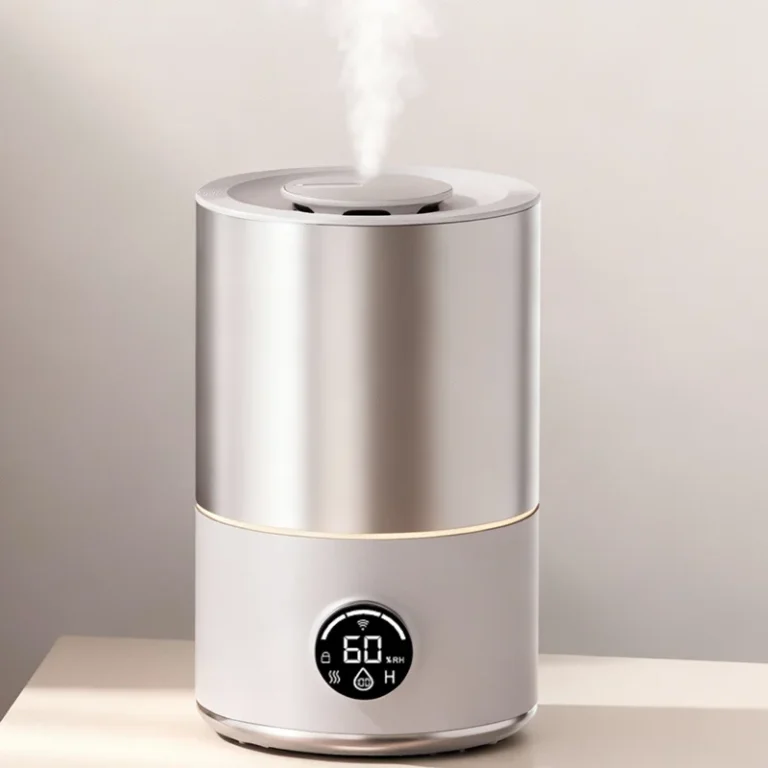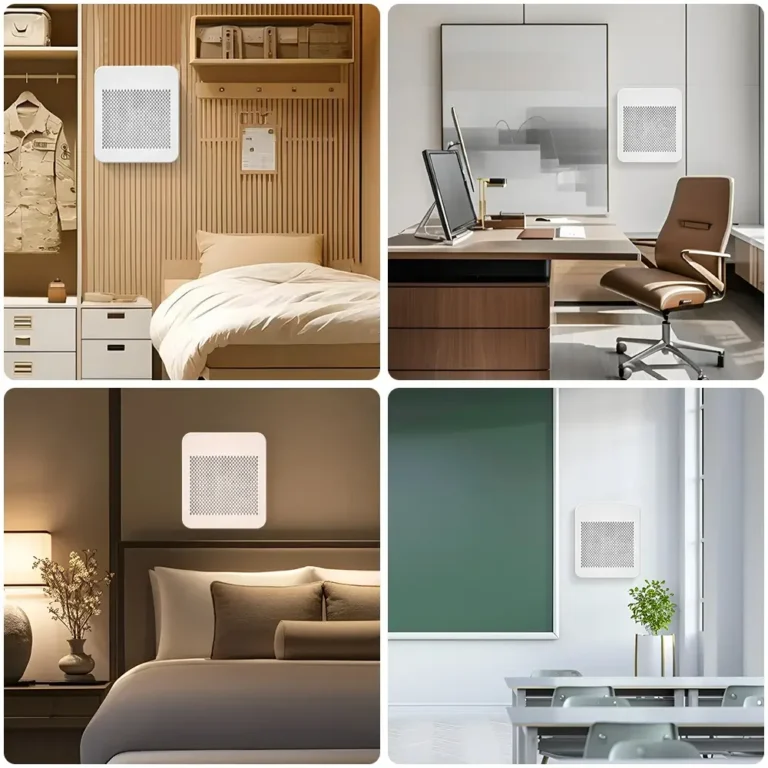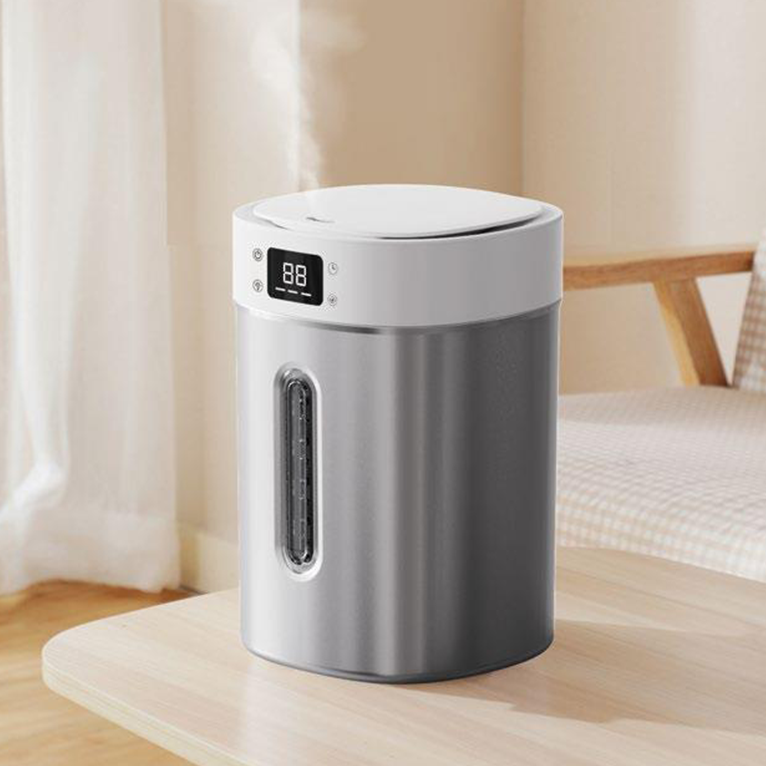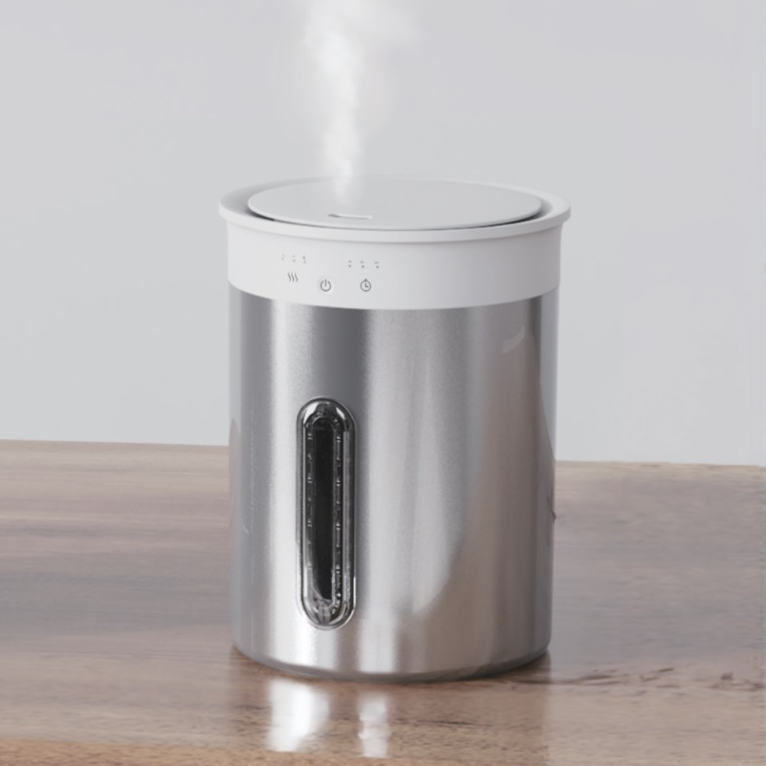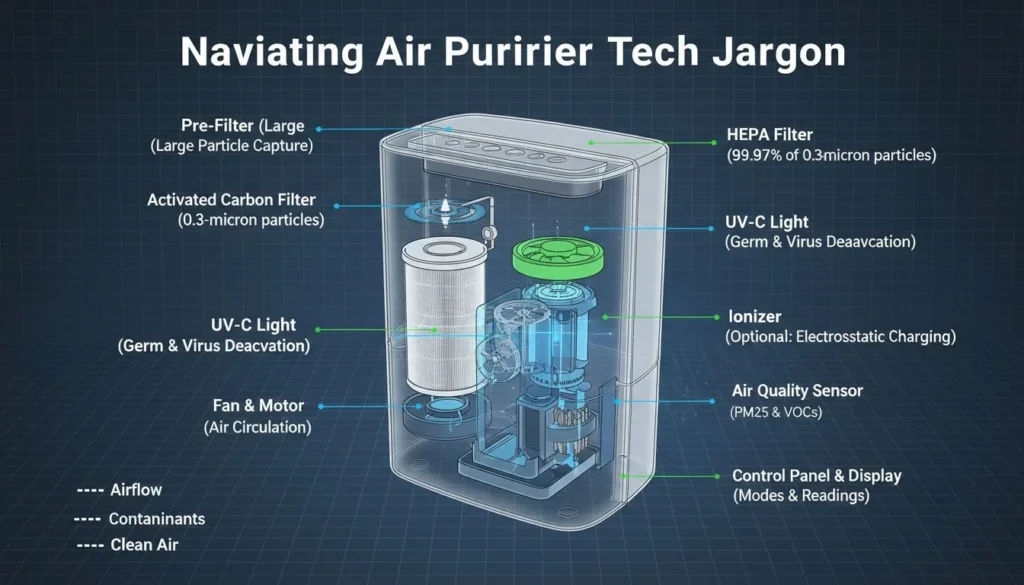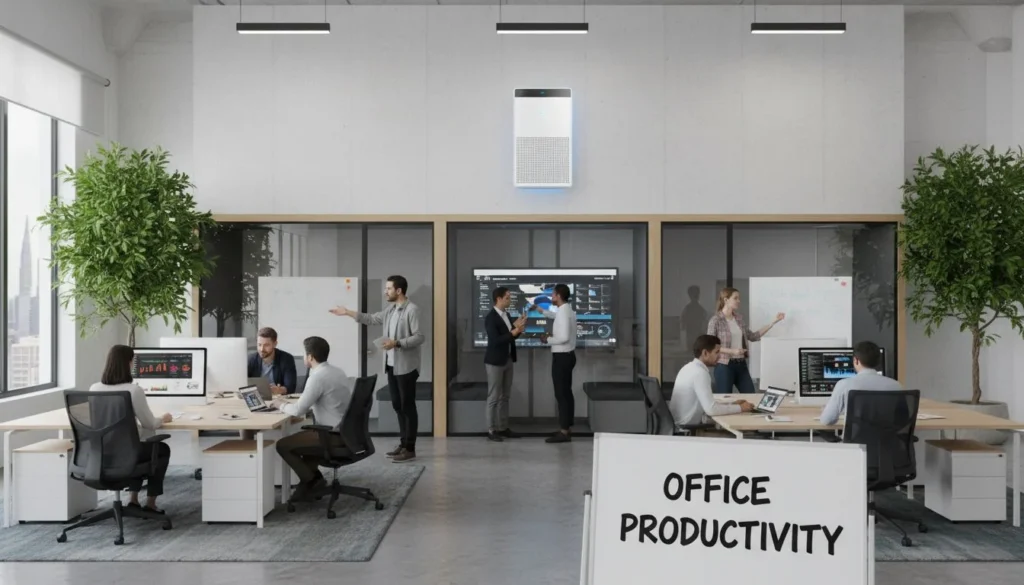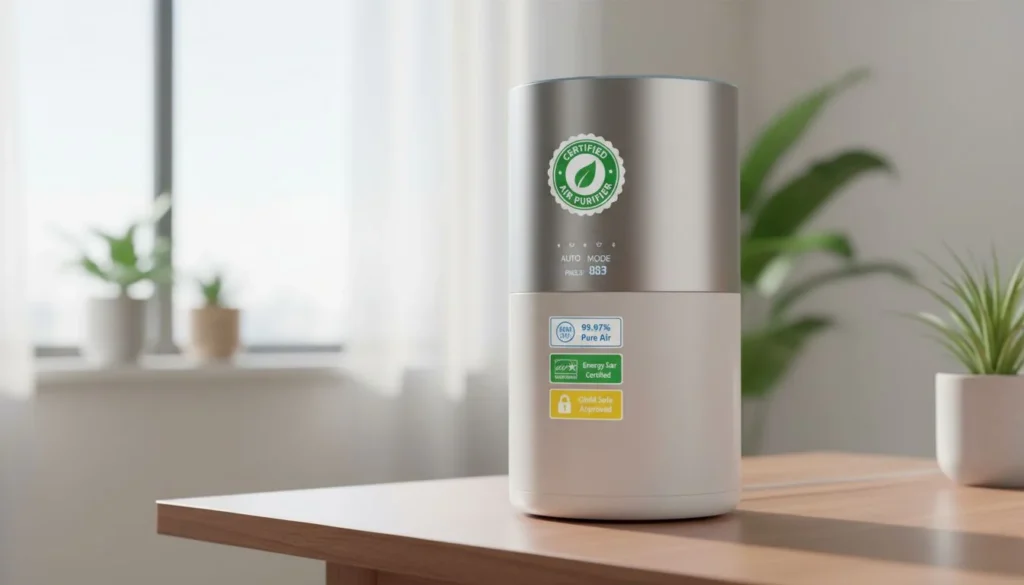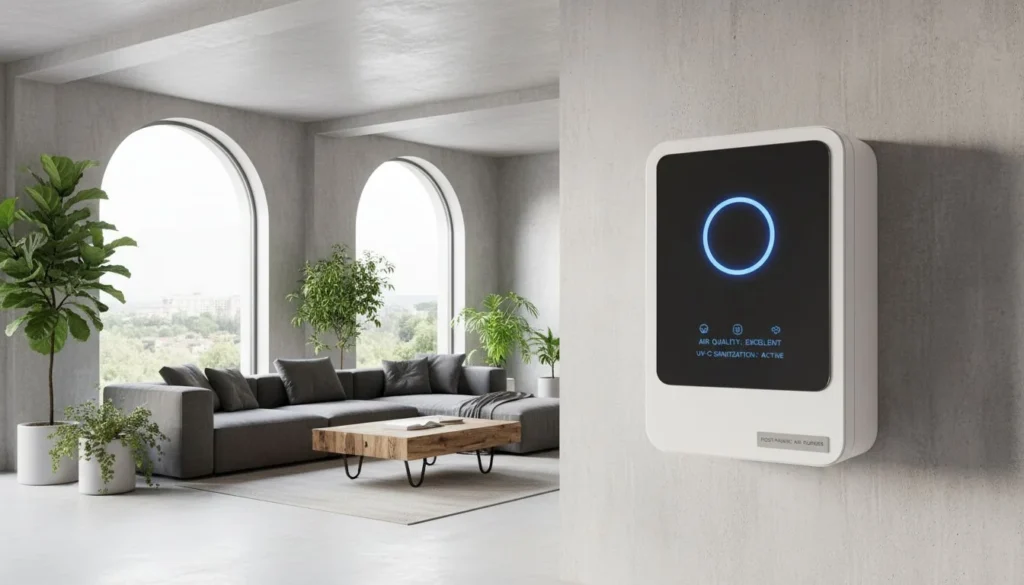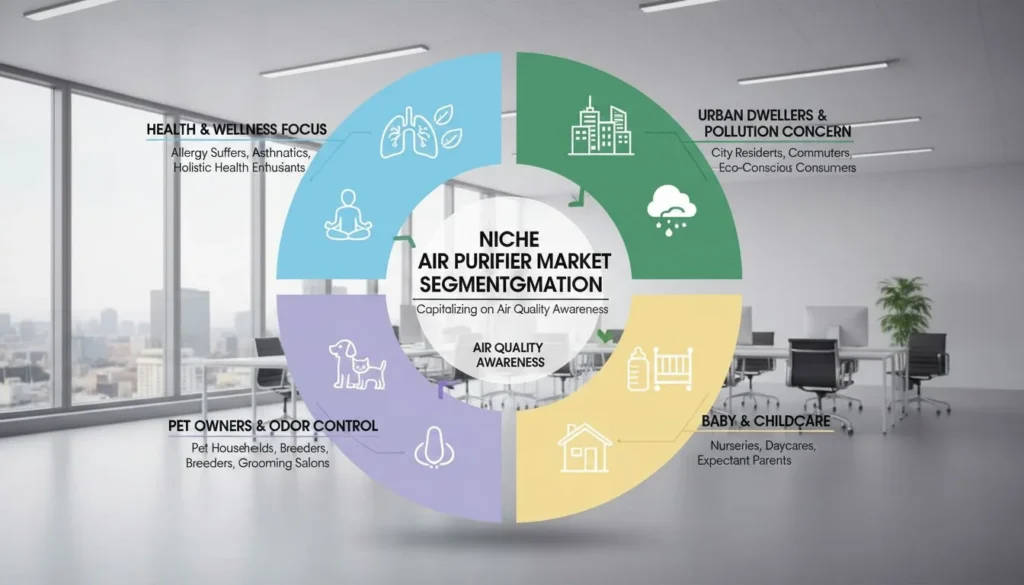Задумывались ли вы когда-нибудь о том, что происходит, когда увлажнитель и очиститель воздуха работают вместе в вашем доме?
Увлажнители часто влияют на работу воздухоочистителей, внося в воздух частицы, которые очиститель должен очищать. Это может снизить его эффективность. Ультразвуковые увлажнители особенно склонны к выделению минеральной пыли при использовании водопроводной воды. Выбор подходящего увлажнителя может помочь избежать этих проблем. Хороший выбор имеет значение.
Я помню, как впервые использовала дома одновременно увлажнитель и очиститель воздуха. Мне казалось, что я наконец-то победил сухой воздух и пыль. Затем произошло нечто странное. Датчик моего воздухоочистителя загорелся красным, указывая на плохое качество воздуха. Мой ультразвуковой увлажнитель выделял крошечные частицы, и очиститель боролся с ними.
Я решил узнать больше о том, как эти устройства работают вместе. Важно понимать эту связь, потому что неправильная настройка может постепенно ухудшить качество воздуха в помещении. Но не волнуйтесь, есть способы решения проблемы! Выбор испарительного увлажнителя действительно сокращает эту проблему. Этот вариант предлагает более здоровый выбор, не влияя на то, насколько хорошо работает ваш воздухоочиститель. Давайте посмотрим, как меняются эти технологии, чтобы они гармонично сочетались друг с другом, и вы дышали легко и без проблем.
Ультразвуковые увлажнители ухудшают качество воздуха.Правда
Ультразвуковые увлажнители создают частицы, которые влияют на показатели качества воздуха.
Испарительные увлажнители воздуха производят вредные частицы.Ложь
Испарительные увлажнители не производят частиц, улучшая качество воздуха.
Какие типы увлажнителей лучше всего подходят для использования с очистителями воздуха?
Правильный выбор увлажнителя воздуха, используемого вместе с очистителем воздуха, имеет решающее значение для создания комфортного и здорового пространства в помещении. Важно определить, какие виды увлажнителей лучше всего работают вместе.
Испарительные увлажнители хорошо сочетаются с воздухоочистителями. Они не выделяют частиц, которые ухудшают качество воздуха. Влага распространяется за счет испарения. Этот процесс сохраняет воздух чистым и здоровым.

Понятие о типах увлажнителей
Зимой я стала часто чихать. Тогда я понял, что выбор правильного увлажнителя очень важен. Неправильный увлажнитель может принести загрязнение в ваш дом. Если вы хотите, чтобы увлажнитель воздуха подходил к вашему воздухоочистителю, вот что вам нужно понять:
- Ультразвуковые увлажнители: Они очень тихие и потребляют мало энергии. Однако будьте осторожны с водопроводной водой. Они могут выбросить в воздух крошечные минеральные частицы и запутать ваш воздухоочиститель. Models like HisoAir HM2206 и HM618 solve part of this challenge with stainless steel tanks. Stainless steel resists bacterial growth, is easier to sanitize than plastic, and provides a more hygienic experience. When paired with distilled water, these ultrasonic humidifiers deliver clean, comfortable moisture without overloading your air purifier.
- Испарительные увлажнители: Они отлично работают с воздухоочистителями. Воздух проходит через влажный фитиль, в результате чего вода попадает в воздух, не добавляя вредных частиц. The HisoAir HM300 is designed with this in mind. As an evaporative humidifier, it produces particle-free moisture, making it the perfect companion for families with asthma or allergies who rely on their air purifiers to maintain clean indoor air.
| Тип | Преимущества | Недостатки |
|---|---|---|
| Ультразвуковой | Бесшумная работа, энергоэффективность | Может выделять в воздух минералы |
| Испарительный | Влажность без частиц, совместимость с очистителями | Как правило, больше по размеру и может требовать более тщательного обслуживания |
Почему стоит выбрать испарительные увлажнители?
Я доверяю испарительным увлажнителям. Они помогают сохранить воздух в помещении свежим и чистым. Эти увлажнители не выделяют крошечных частиц, которые мешают моему очиститель воздуха1. Это имеет большое значение, если в вашей семье есть астма или аллергия2. Вы чувствуете облегчение и знаете, что ваш увлажнитель не пронесет вредные частицы, которые ухудшают состояние.
Поначалу покупка такого прибора может обойтись дороже. Однако комфорт и здоровье, обеспечиваемые чистым воздухом, стоят этих затрат. Все больше людей осознают необходимость поддерживать в домах комфорт и здоровье.
Передовые решения и тенденции
Современные технологии предлагают системы, которые одновременно увлажняют и очищают воздух. Одно устройство делает и то, и другое. Такие устройства от таких брендов, как HisoAir3 действительно впечатляют. Они настраиваются в зависимости от текущих условий, экономят пространство и хорошо регулируют качество воздуха, не требуя жонглирования различными устройствами.
По мере того как люди все больше заботятся о здоровье окружающей среды, инвестиции в интеллектуальные решения становятся все более важными. Наблюдать за развитием этих инноваций очень интересно, поскольку они повышают комфорт и улучшают самочувствие в доме. Выбирая следующую бытовую технику, подумайте о своих потребностях и о том, как эти новые технологии способствуют оздоровлению жилых помещений.
Дополнительные соображения
- Обслуживание: Регулярная очистка важна для того, чтобы не допустить размножения бактерий и предотвратить образование минеральных отложений, которые могут повлиять на работу увлажнителя или ваше здоровье. The HisoAir's stainless steel design makes this easier by preventing bacteria buildup in the tank.
- Качество воды: Для ультразвуковых типов необходимо использовать дистиллированную или деминерализованную воду, чтобы уменьшить выделение минералов; испарительные модели полностью исключают эту проблему.
Подумайте об этих деталях, сочетая увлажнитель с очистителем воздуха, чтобы вам было легко дышать, не отказываясь от хорошего качества воздуха и здоровья.
Ультразвуковые увлажнители вызывают плохое качество воздуха.Правда
Ультразвуковые увлажнители могут выделять частицы, ухудшающие качество воздуха.
Испарительные увлажнители воздуха производят вредные частицы.Ложь
Испарительные увлажнители не выделяют частиц, улучшая качество воздуха.
Могут ли увлажнители воздуха вызывать рост плесени в воздухоочистителях?
Вы когда-нибудь задумывались о том, чтобы использовать увлажнитель и очиститель воздуха одновременно? Возможно, это не всегда полезно.
Увлажнитель воздуха может привести к образованию плесени в воздухоочистителях. Избыток влаги может создать сырость в помещении. Споры плесени растут во влаге. Чтобы предотвратить это, правильно обслуживайте свои приборы. Подумайте об испарительном увлажнителе. Он, вероятно, снизит риск появления лишней влаги. Это важно.
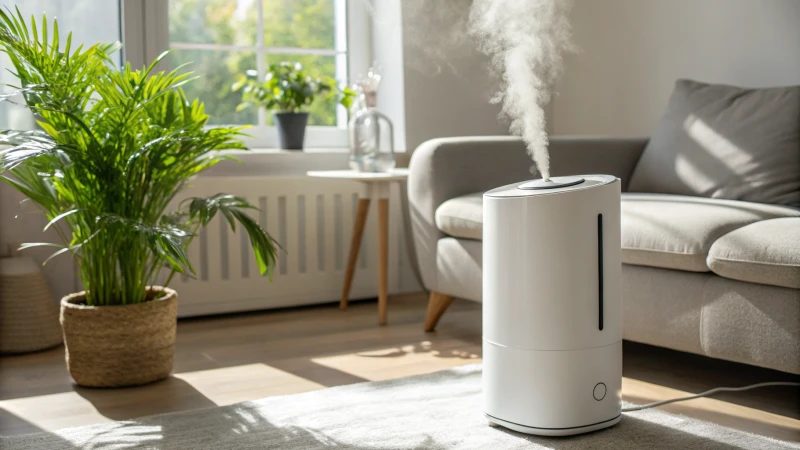
Понимание того, как увлажнители работают с воздухоочистителями
Вам никогда не казалось, что воздух в вашем доме слишком сухой? В такие моменты я думаю: "Почему бы не использовать мой увлажнитель вместе с моим воздухоочистителем?" Кажется, что это идеальная пара, верно? Но вот неожиданность: не все увлажнители одинаковы, а некоторые из них могут сделать все довольно сложным. Когда я попробовал ультразвуковой увлажнитель, он распылял крошечные капельки, которые попадали в мой воздухоочиститель. Со временем я заметила, что мой очиститель превратился в гостеприимное место для плесени.
Распознавание опасностей, связанных с плесенью
Сначала это было просто раздражающее подозрение на краю моего сознания. Но вскоре чихание стало частым, а аллергия обострилась. Тогда я понял: за всем этим может стоять плесень. Плесень - это не только раздражающий фактор, но и большой риск для здоровья. Вдыхание споры плесени4 влияет на дыхание и может ухудшить состояние при астме и аллергии. Никто не хочет иметь проблемы со здоровьем, пытаясь создать более комфортные условия в доме. Балансировка правильного уровня влажности стала моей новой задачей.
Простые шаги по борьбе с плесенью
Каково было мое решение? Я перешел на испарительный увлажнитель. Это действительно большая разница! В отличие от ультразвуковых, эти не посылают частицы, которые приводят к скоплению воды внутри очистителей. Я также начал регулярно чистить и заменять фильтры в соответствии с рекомендациями производителя. Если вы похожи на меня, откладывание этих дел кажется нормальным, но поверьте, оно того стоит. Сохранение сухого пространства вокруг моих устройств оказалось весьма полезным.
Вот краткая сравнительная таблица:
| Характеристика | Ультразвуковой увлажнитель воздуха | Испарительный увлажнитель |
|---|---|---|
| Эмиссия частиц | Да | Нет |
| Риск появления плесени в очистителе воздуха | Высокий | Низкий |
| Требование к обслуживанию | Высокий | Умеренный |
Достижения в области комбинированных воздушных систем
Поскольку люди все больше заботятся о качестве воздуха в помещениях, будущее технологий выглядит радужным. Я обнаружил, что такие бренды, как HisoAir, лидируют в производстве комбинированных систем, объединяющих воздухоочистители с испарительными увлажнителями. Представьте себе гаджет, который адаптируется в зависимости от качества воздуха и уровня влажности - он действует как умный помощник для воздуха в вашем доме! Эти разработки избавляют от беспокойства о плесени и позволяют нам наслаждаться свежим воздухом. Мне действительно интересно узнать, как Технология HisoAir5 может стать частью моего дня и, возможно, вашего.
Изучение того, как эти устройства работают вместе, стало для меня неожиданностью. Речь идет о достижении баланса, когда все работает гладко, и я за разумный выбор в пользу здорового образа жизни.
Ультразвуковые увлажнители вызывают проблемы с качеством воздуха.Правда
Ультразвуковые увлажнители могут выделять частицы, которые влияют на качество воздуха.
Испарительные увлажнители воздуха производят вредные частицы.Ложь
Испарительные увлажнители не производят частиц, улучшая качество воздуха.
Как плохое качество воздуха в помещении влияет на здоровье?
Вы когда-нибудь задумывались о том, что воздух в вашем доме может нанести вред вашему здоровью? Эта мысль заслуживает внимания. Ваше жилое пространство может влиять на ваше самочувствие. Давайте узнаем, как домашняя обстановка влияет на ваше здоровье, и найдем возможные решения.
Плохой воздух в помещении может привести к проблемам с дыханием. Он может усугубить астму и аллергию. Он повышает вероятность серьезных заболеваний. Примером могут служить болезни сердца и рак легких. Борьба с загрязнением воздуха в помещениях жизненно важна для здоровья.

Понимание загрязнителей воздуха в помещении
Я помню тот день, когда обнаружил, что воздух в моем доме - это скрытый враг. Мои глаза чесались, а голова болела сильнее, чем обычно в ленивое воскресенье. Это заставило меня узнать о таких загрязнителях воздуха в помещении, как плесень, пылевые клещи, шерсть домашних животных и летучие органические соединения (ЛОС). Эти коварные захватчики широко распространены и могут вызывать что угодно - от зуда в глазах до полной усталости. Наши чистящие средства и даже наши кровати могут содержать эти неприятные вещества.
| Загрязнитель | Источник | Влияние на здоровье |
|---|---|---|
| Плесень | Влажные помещения | Аллергия, респираторные заболевания |
| Пылевые клещи | Постельные принадлежности, обивка | Триггеры астмы |
| ЛОС | Краски, чистящие средства | Головные боли, поражение печени |
Респираторные заболевания и качество воздуха в помещении
У моей подруги в доме ее бабушки часто случались приступы астмы. Причиной были мельчайшие частицы от приготовления пищи и иногда сигаретный дым. Такие частицы, как PM2.5, попадают в наши легкие, ухудшая течение астмы. Удивительно, как что-то невидимое может сильно влиять на наше дыхание. Очень удивительно.
Респираторные заболевания, такие как астма и хроническая обструктивная болезнь легких (ХОБЛ), часто связаны с плохим качеством воздуха в помещении. Твердые частицы (PM2.5) из таких источников, как табачный дым или приготовление пищи, могут проникать глубоко в легкие, усугубляя такие заболевания, как астма, и могут привести к долговременное лёгкое6 проблемы.
Долгосрочные риски для здоровья
Мысль о том, что плохой воздух в помещении может привести к раку, потрясла меня. Представьте себе годы воздействия химических веществ, таких как формальдегид, из строительных материалов или бытовых вещей. Это не просто чихание и кашель; со временем это может привести к проблемам с сердцем и легкими.
Длительное воздействие плохого качества воздуха в помещении связано с серьезными рисками для здоровья, такими как сердечно-сосудистые заболевания и рак. Такие химические вещества, как формальдегид, содержащиеся в строительных материалах и бытовых товарах, могут быть канцерогенными.
Снижение загрязнения воздуха в помещениях
После этого открытия я стал выступать за чистоту воздуха в помещениях. Такие простые вещи, как улучшение вентиляции и выбор продуктов с низким содержанием летучих органических соединений, очень помогают. Я купила очиститель воздуха с увлажнителем - это все изменило! Разумный выбор позволяет нам дышать легче.
Улучшение вентиляции, использование очистителей воздуха и выбор продуктов с низким содержанием летучих органических соединений могут значительно снизить уровень загрязнения воздуха в помещении. Для поддержания чистоты воздуха лучше использовать такие приборы, как испарительные увлажнители, которые не образуют частиц.
Изучение таких вариантов, как встроенные воздухоочистители7 со встроенными увлажнителями воздуха также могут быть полезны, поскольку сочетают очистку и контроль влажности в одном устройстве.
Поведенческие изменения для улучшения качества воздуха
Маленькие изменения часто действительно имеют значение. Теперь я часто убираюсь, уменьшаю беспорядок, не разрешаю курить в помещении, проверяю на радон и поддерживаю системы отопления/охлаждения в идеальном состоянии - благодаря этим изменениям мой дом стал более свежим!
Простые изменения в поведении также могут улучшить качество воздуха в помещении: регулярная уборка, уменьшение беспорядка, отказ от курения в помещении - это практические шаги; проверка дома на наличие радона обеспечивает надлежащее обслуживание систем отопления/охлаждения.
Понимание этих тем позволит вам понять, почему хорошее качество воздуха в помещении означает улучшение здоровья. Рассмотрите новые варианты, такие как HisoAir8 чтобы действительно улучшить обстановку в вашем доме.
Ультразвуковые увлажнители ухудшают качество воздуха.Правда
Ультразвуковые увлажнители могут выделять частицы, ухудшающие качество воздуха.
Испарительные увлажнители воздуха производят вредные частицы.Ложь
Испарительные увлажнители не производят частиц, улучшая качество воздуха.
Стоит ли использовать комбинированный очиститель и увлажнитель воздуха?
Вы когда-нибудь задумывались о покупке аппарата, который очищает воздух и добавляет в него воду? Я расскажу вам о реальных преимуществах и недостатках.
Устройство, которое одновременно очищает воздух и добавляет в него влагу, обеспечивает легкость, поддерживая свежесть и необходимую влажность воздуха. Он экономит пространство. Однако он может требовать более тщательного ухода и поначалу стоить дороже. Перед тем как сделать выбор, важно учесть свои потребности и образ жизни. Это очень важно.

Понимание основ
Мне было интересно использовать очиститель и увлажнитель воздуха вместе. В моем небольшом доме уже было много приборов, каждому из которых требовалось свое место. Эти приборы очищают воздух и добавляют в него влагу, что помогает в сухую зимнюю пору.
Комбинированный воздухоочиститель и увлажнитель воздуха может упростить вашу домашнюю обстановку. Эти устройства предназначены для удаления загрязняющих веществ и увлажнения сухого воздуха. Для многих это решение "два в одном" экономит место и снижает необходимость в нескольких устройствах.
Преимущества комбинированных агрегатов
- Экономия места: Небольшая квартира очень выигрывает от экономии пространства.
- Удобство: Управлять одним устройством вместо двух очень просто.
- Интегрированная технология: Новые модели, такие как HisoAir9Они очень умны! Они автоматически регулируют настройки при изменении качества воздуха. Это очень удобно для таких любителей техники, как я.
| Характеристика | Выгода |
|---|---|
| Эффективность использования пространства | Меньше беспорядка в вашем жилом пространстве |
| Экономически эффективный | Потенциально дешевле, чем покупка двух единиц |
| Умные настройки | Улучшает мониторинг качества воздуха |
Проблемы и соображения
Эти устройства привлекли мое внимание, но у них есть недостатки:
- Сложность обслуживания: Чистить их сложнее, чем два отдельных гаджета.
- Более высокая первоначальная стоимость: Поначалу цены могут быть высокими, но я напоминаю себе, что это для долгосрочного комфорта.
- Потенциальные проблемы с производительностью: Некоторые модели были не так хороши, как самостоятельные машины.
Рассмотрите возможность использования испарительный увлажнитель10 вместе с очистителем, чтобы избежать попадания мелких частиц, которые выделяют некоторые ультразвуковые типы.
Последствия для здоровья
Я беспокоился о проблемах со здоровьем. Вода из-под крана могла выделять загрязняющие вещества, которые обманывали датчики, показывая низкое качество воздуха. Использование дистиллированной воды или моделей с фильтрами успокаивало мои опасения.
Неправильное использование увлажнителей, особенно ультразвуковых, может привести к ухудшению качества воздуха. Выбор модели, использующей дистиллированную воду или встроенную систему фильтрации, может облегчить эту проблему.
Исследуйте, как качество воздуха в помещении11 влияет на здоровье, чтобы лучше понять, как эти системы могут влиять на состояние дыхательных путей, например, астму или аллергию.
Плохой воздух в помещении может усугубить астму или аллергию, и открытие того, как эти системы помогают, стало для нас настоящим открытием.
Тенденции рынка
Наблюдать за развитием технологий, направленных на создание решений "все в одном", очень интересно. Мне нравятся модели с искусственным интеллектом, которые меняют настройки в зависимости от помещения; это как помощник, который делает мой дом лучше.
В настоящее время наблюдается тенденция перехода к более интегрированным устройствам, предлагающим расширенные функции и улучшающим здоровье. Рассмотрите новейшие модели с функциями искусственного интеллекта для автоматической регулировки в зависимости от условий в помещении.
HisoAir's12 Работа над сочетанием очистки и увлажнения воздуха интересна, если вы любите технологичные и простые в использовании конструкции. Их внимание к испарительной технологии может уменьшить крошечные выбросы загрязняющих веществ, характерные для ультразвуковых увлажнителей.
Ультразвуковые увлажнители вызывают плохое качество воздуха.Правда
Ультразвуковые увлажнители могут создавать частицы в водопроводной воде, влияющие на качество воздуха.
Испарительные увлажнители воздуха производят вредные частицы.Ложь
Испарительные увлажнители не производят частиц, в отличие от ультразвуковых.
Заключение
Humidifiers can sometimes affect air purifiers if not chosen carefully. Ultrasonic types may release particles when used with tap water, but stainless steel ultrasonic humidifiers like the HM2206 and HM618 reduce hygiene risks and perform best with distilled water. For those who want particle-free operation without extra precautions, evaporative humidifiers such as the HM300 pair seamlessly with air purifiers to keep indoor air fresh and healthy.With the right choice, you don’t have to choose between comfort and clean air you can enjoy both.
-
Узнайте, как датчики PM2.5 помогают поддерживать качество воздуха, обнаруживая мелкие твердые частицы. ↩
-
Узнайте, как правильный выбор увлажнителя воздуха может облегчить симптомы астмы и аллергии. ↩
-
Узнайте, как комбинированные системы повышают удобство и улучшают управление воздухом в помещении. ↩
-
Понимание того, как споры плесени влияют на здоровье человека, подчеркивает важность эффективного управления качеством воздуха в помещении. ↩
-
Узнайте об инновационных продуктах HisoAir, которые могут помочь вам предотвратить рост плесени и сохранить качество воздуха в помещении. ↩
-
Узнайте о влиянии плохого качества воздуха на здоровье легких, в том числе о возможных долгосрочных последствиях. ↩
-
Узнайте, как интегрированные устройства могут улучшить качество воздуха, сэкономив при этом место и средства. ↩
-
Ознакомьтесь с инновационными продуктами HisoAir, предназначенными для эффективного улучшения качества воздуха в помещении. ↩
-
Познакомьтесь с инновационной интеллектуальной технологией HisoAir, которая регулирует настройки на основе данных о качестве воздуха в режиме реального времени. ↩
-
Узнайте, почему испарительные увлажнители воздуха предпочтительнее ультразвуковых моделей для улучшения здоровья и снижения выбросов частиц. ↩
-
Поймите, как качество воздуха в помещении влияет на такие респираторные заболевания, как астма и аллергия. ↩
-
Откройте для себя передовую технологию HisoAir, сочетающую очистку воздуха с увлажнением. ↩

